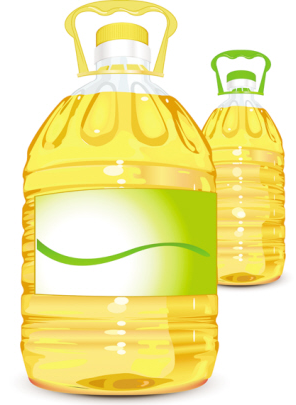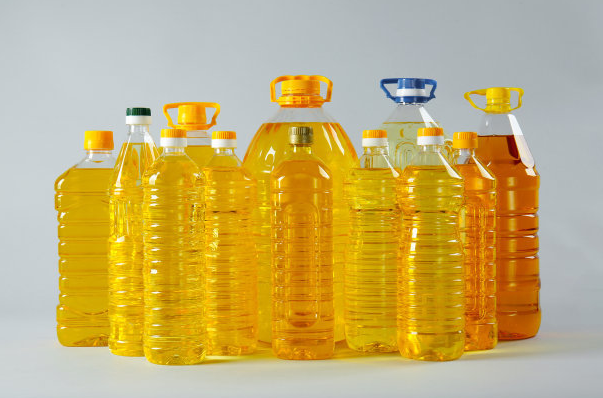Pre-packaged food refers to food that is pre-packaged or made in packaging materials or containers. Pre-packaged edible vegetable oil is one of them. In order to help consumers scientifically purchase, eat and store pre-packaged edible vegetable oils, the State Administration for Market Supervision and Administration has made the following consumption tips.

1. There are many kinds of edible vegetable oil
Edible vegetable oil is an edible oil made from edible vegetable oil or vegetable crude oil. Commonly used in daily life, such as soybean oil, rapeseed oil, peanut oil, sesame oil, edible vegetable oil and so on.
2. Product labels should be read carefully
There are strict regulations on the labeling of pre-packaged edible vegetable oils. When purchasing, you can focus on the following:

(1) Look at the name
For a single variety of edible vegetable oil, the standard name of that kind of edible vegetable oil should be used, and no other varieties of oil should be mixed. For example, peanut oil is vegetable oil produced with peanut as oil, and rapeseed oil is vegetable oil produced with rapeseed as oil.
For edible fats and oils prepared from two or more edible vegetable oils, the product name should be uniformly marked as "edible vegetable oil". Blended oil cannot be named after a certain ingredient. For example, "olive blended oil" and "flaxseed blended oil" are incorrect, and the ratio of various edible vegetable oils should be indicated on the label.
In addition, genetically modified edible vegetable oils should be clearly and conspicuously indicated on the labels and instructions in accordance with regulations. If the import is not approved as raw materials for processing and commercial planting is not approved, and the genetically modified crops and processed products do not exist on the market, the edible vegetable oil labels and instructions shall not be marked with the words "non-genetically modified".
(2) Look at the ingredient list
In the ingredient list, use "ingredients" or "ingredients list" as the leading word in the label, and indicate various ingredients.
For example, a single-variety "peanut oil" product should be marked as "peanut oil" in its ingredient list. Another example is the "edible vegetable blended oil" product, the proportion of various edible vegetable oils used in the product will be indicated in the ingredient list or adjacent parts. Edible plant blended oils usually have the following labeling methods: soybean oil, corn oil, rapeseed oil at a ratio of 5:3:2; soybean oil (50g/100g), corn oil (30g/100g), rapeseed oil ( 20g/100g); soybean oil (50%), corn oil (30%), rapeseed oil (20%). The above three labels all indicate that the product is prepared from soybean oil, corn oil and rapeseed oil in a ratio of 5:3:2, that is, each 100mL product contains 50mL soybean oil, 30mL corn oil and 20mL rapeseed oil.

(3) Look at the nutrient composition table
It is stipulated that the content of energy, protein, fat, carbohydrate and sodium and its percentage in the nutrient reference value (NRV) must be marked in the nutritional composition table.
If a nutrition claim or a nutrition function claim is made for other nutrients other than the above, the content of the nutrient and its percentage of the reference value of the nutrient should be indicated; if a nutrient fortifier is used, the fortified oil should be indicated The content value of the nutrient in the product and its percentage to the nutrient reference value. If hydrogenated or partially hydrogenated fats and oils are used in the production process, the content of trans fats (acids) should be indicated.
(4) Look at the production date, shelf life and storage conditions
The shelf life is the period during which the edible vegetable oil maintains the quality of the product under the storage conditions specified on the label. Production date, shelf life, and storage conditions are closely related. It is recommended to select products whose production date is close to the time of purchase and within the warranty period, and pay attention to the storage conditions required for the products.
(5) Other optional information
Net weight. It can be used to estimate whether it can be eaten within the shelf life, or to compare the cost-effectiveness of edible vegetable oil.
Producer and distributor information. Including the name, address and contact information of the producer and distributor. According to the actual situation of the producer, it may also include information such as the name and address of the entrusting unit and the entrusted unit; imported edible vegetable oil generally does not indicate the name, address and contact information of the producer, but will indicate the name of the country or region of origin. And the name, address and contact information of the agent, importer or distributor registered in accordance with the law.
The food production license number and product standard code of the product.
The manufacturer can voluntarily choose the content to be marked. For edible vegetable blended oils, some manufacturers indicate the name and content of fatty acid composition greater than 2% in the label.
The above wonderful content is the sharing of How to read pre-packaged edible vegetable oil labels by Henan Zhongxing Grain and Oil Machinery Co., Ltd. If you want to know more oil processing technology, you can contact us at any time.
Copyright © Henan Zhongxing Grain And Oil Machinery Co.,Ltd. All Rights Reserved. Powered by MetInfo